A New Copper Roof for the Bodleian Library in Oxford
Copper Applications in Architecture
The University of Oxford was founded in the 13th Century and from its relatively humble beginnings as a center for theology, and it has grown to become one of the premier academic institutions in the world. Over the centuries, magnificent buildings have been built to reflect the growing importance of the University, inspiring the 19 th-century poet, Matthew Arnold, to describe Oxford as "that sweet city with her dreaming spires". Copper architectural features and statuary enhance the beauty of many of these buildings, including:
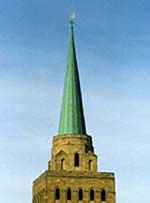 Figure 1. The copper spire of Nuffield College, Oxford.
Figure 1. The copper spire of Nuffield College, Oxford.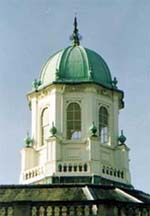 Figure 2. The copper dome on the Sheldonian Theater
Figure 2. The copper dome on the Sheldonian TheaterThe Bodleian Library
The Bodleian Library is the largest of the libraries at the University of Oxford and, in England, is second in size only to the British Library. It is named after its benefactor, Sir Thomas Bodley (1545-1613), who retired from public life in 1598 to devote the rest of his life to refounding the old University Library. Since 1602, the Library has been continually expanded to accommodate its increasing collection of books until in 1939 an additional library, The New Bodleian Library, was built nearby. The original Bodleian Library is a magnificent building, the decorated ceiling and oak beams of Duke Humfrey's Library being particularly splendid.
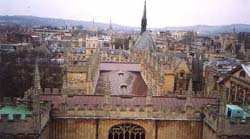 Figure 3. New and old copper on the Bodleian Library roof. Note the difference in color of the two portions of the roof. In time, the new (brown) portion will develop the same green patina that had formed on the older.
Figure 3. New and old copper on the Bodleian Library roof. Note the difference in color of the two portions of the roof. In time, the new (brown) portion will develop the same green patina that had formed on the older.The Old Roof
The Library originally had a lead roof but during the nineteenth century, this was replaced with copper. The copper roof was refitted in the 1960s, and over the years, the characteristic green patina developed. Copper is selected for roofs not only for its aesthetic appearance but also because it is easy and economical to clad a roof with copper. The low weight of copper roofing panels compared to lead or zinc can considerably reduce the cost of the timber substructure. A copper roof also requires minimal maintenance because of copper's excellent corrosion resistance and its relatively small coefficient of thermal expansion, which reduces the tendency for buckling and cracking.
The old copper roof was constructed by the traditional method where fully annealed strips of copper, up to 6 ft (1.8 m) long and 0.02 in (0.6 mm) thick, are used to clad the roof. These relatively short lengths have to be joined by transverse seams, clearly visible in Figure 6.
 Figure 4. Old roof of the Bodleian Library with the Sheldonian Theatre beyond.
Figure 4. Old roof of the Bodleian Library with the Sheldonian Theatre beyond.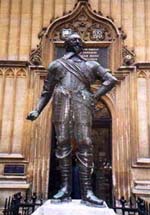 Figure 5. Bronze statue of William Herbert, 3rd Earl of Pembroke. The patina on the bronze alloy from which the statue was cast is different in color from that which forms on the pure copper roof.
Figure 5. Bronze statue of William Herbert, 3rd Earl of Pembroke. The patina on the bronze alloy from which the statue was cast is different in color from that which forms on the pure copper roof.Although the copper roof was satisfactorily protecting the Library from the weather, beneath the roof, serious problems were developing. The Library was infested with deathwatch beetle (Xestobium rufovillosum), whose larvae feed on wood. In the 1990s, it was realized that the infestation was so severe that if drastic action were not quickly taken, the decorated ceiling above Duke Humfrey's Library would be lost.
A survey of the Library showed that the substructure of the roof was unsatisfactory, aggravating the infestation. The old substructure is illustrated in Figure 7.
 Figure 6. The old copper roof. Note the staggered transverse seams, made necessary by the length of copper sheets that were available in the 19th Century, when the roof was installed.
Figure 6. The old copper roof. Note the staggered transverse seams, made necessary by the length of copper sheets that were available in the 19th Century, when the roof was installed. Figure 7. Design of old roof led to condensation of moisture on the interior side of the copper sheets.
Figure 7. Design of old roof led to condensation of moisture on the interior side of the copper sheets.Because there was no ventilation or insulation beneath the copper, moisture in warm air rising from the library below would condense on the underside of the cold copper. The condensation soaked into the roof timbers providing the ideal damp environment for the deathwatch beetle. Renovation of the roof structure was therefore an urgent necessity.
Back to TopThe New Roof
Tuffin Ferraby & Taylor,who are specialists in building conservation and one of the largest Chartered Building Surveying Practices in the United Kingdom, were appointed project surveyors (engineers) for this work. The first phase of the work attended to the roof over the oldest part of the Library including the Duke Humfrey's Library. After consultation with the UK Copper Development Association, Tuffin Ferraby & Taylor designed a new roof in accordance with the best recommended practice (see Figure 8).
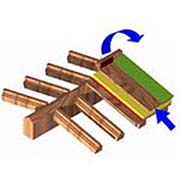 Figure 8. Design of the new roof permits air to flow beneath the copper, thus preventing the condensation of moisture on the cold metal.
Figure 8. Design of the new roof permits air to flow beneath the copper, thus preventing the condensation of moisture on the cold metal. 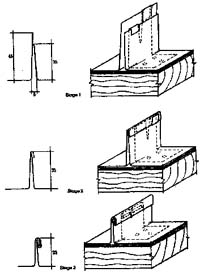 Figure 9. Formation of standing seams with fixed clips.
Figure 9. Formation of standing seams with fixed clips.The roof allows air to flow through a 2-in (50-mm) gap between a layer of 2.4-in (60-mm) thick insulation board (shown in yellow) and the copper. Beneath the insulation is a plastic monoflex vapor barrier (shown red). This new substructure prevents condensation forming since the warm moist air cannot reach the cold underside of the copper.
The edges of sheets are pre-profiled to create a 0.2-in (5-mm) gap between adjacent sheets, left, thus allowing for transverse expansion. The long strip method was chosen for the roof installation. This relatively new technique differs from the traditional method used for the previous roof by using strips of copper up to 8.5 meters long. The main advantage of this method is the elimination of cross seams thus reducing the time and cost of laying the roof. The use of the longer strips is made possible by incorporating special expansion clips into the standing seams to allow longitudinal movement of the panels as the temperature changes and by using 1/8- to 1/4-hard temper copper strip for extra rigidity. The edges of the strip are pre-profiled so that when adjacent strips are joined with a double lock standing seam, a gap is left at the base of the standing seam to allow for thermal expansion across the width of the strip (see Figure 9).
More than 750 square meters of copper, supplied by KM Europa Metal AG of Germany, were used for the first phase of the re-roofing program. The copper was supplied in coils with 1/4-hard temper. The coils were first straightened and the edges pre-profiled for the standing seams, Figure 10.
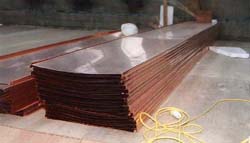 Figure 10. Copper strips awaiting installation on the roof.
Figure 10. Copper strips awaiting installation on the roof.The panels were laid on a nylon underfelt and secured with both fixed and expansion clips. A rolled seam using the pre-profiled edges joined adjacent panels. The installation technique and clips are shown in the following pictures ( Figures 11,12,13).
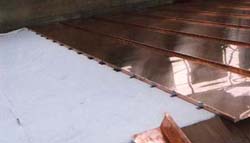 Figure 11. The installation of copper panels to the underfelt on the roof.
Figure 11. The installation of copper panels to the underfelt on the roof. Figure 12. Expansion clip.
Figure 12. Expansion clip. Figure 13. Fixed clip used to hinder expansion of the copper sheets in the lengthwise direction.
Figure 13. Fixed clip used to hinder expansion of the copper sheets in the lengthwise direction.The installation of the Phase 1 roof was completed in the fall of 1999 and the remainder of the roof should be completed in 2000. After a few months of weathering, the roof has lost its original bright sheen and is now a chocolate brown color. It will be several years before the new roof acquires the characteristic green patina. The contrast in color between the old and the new roof can be seen in Figures 14 and 15. The absence of transverse seams on the new roof because of the long strip roofing method can also be seen.
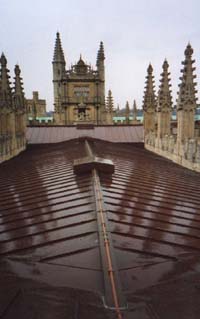 Figure 14. New roof with long copper strips. Note the absence of transverse seams.
Figure 14. New roof with long copper strips. Note the absence of transverse seams.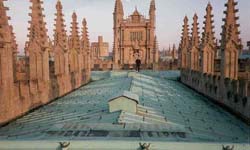 Figure 15. Old roof with short copper strips.
Figure 15. Old roof with short copper strips.Innovations wishes to thank Richard Virr of Tuffin Ferraby & Taylor for providing technical information and illustrations of the new roof.
Also in this Issue:
- A New Copper Roof for the Bodleian Library in Oxford
- Copper in Third-Generation Antifoulants For Marine Coatings
